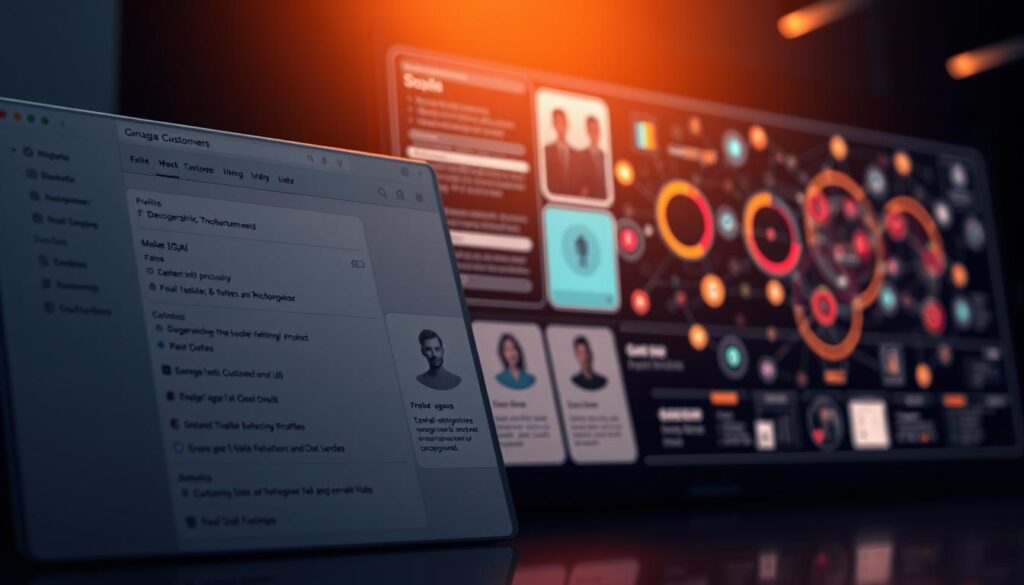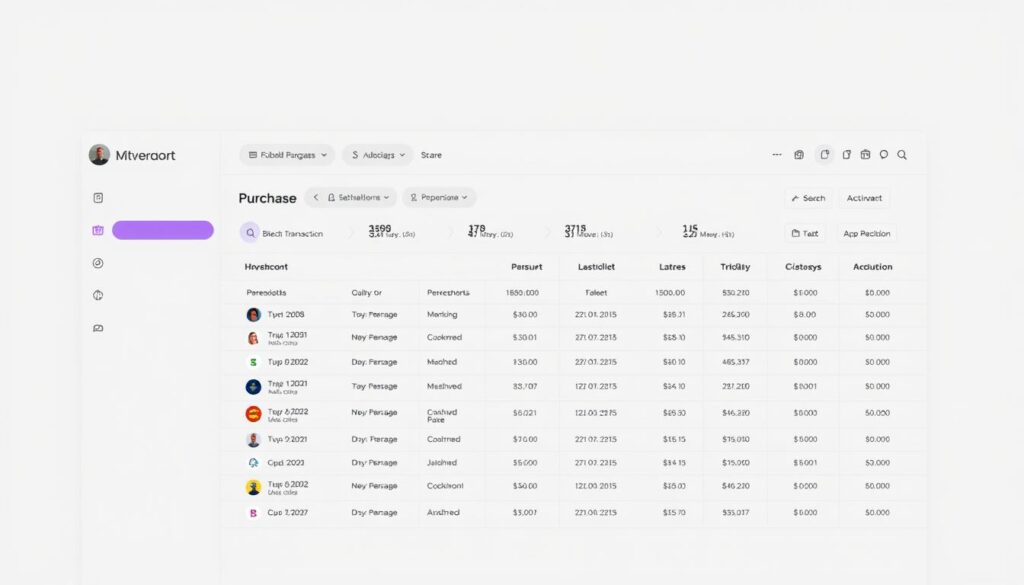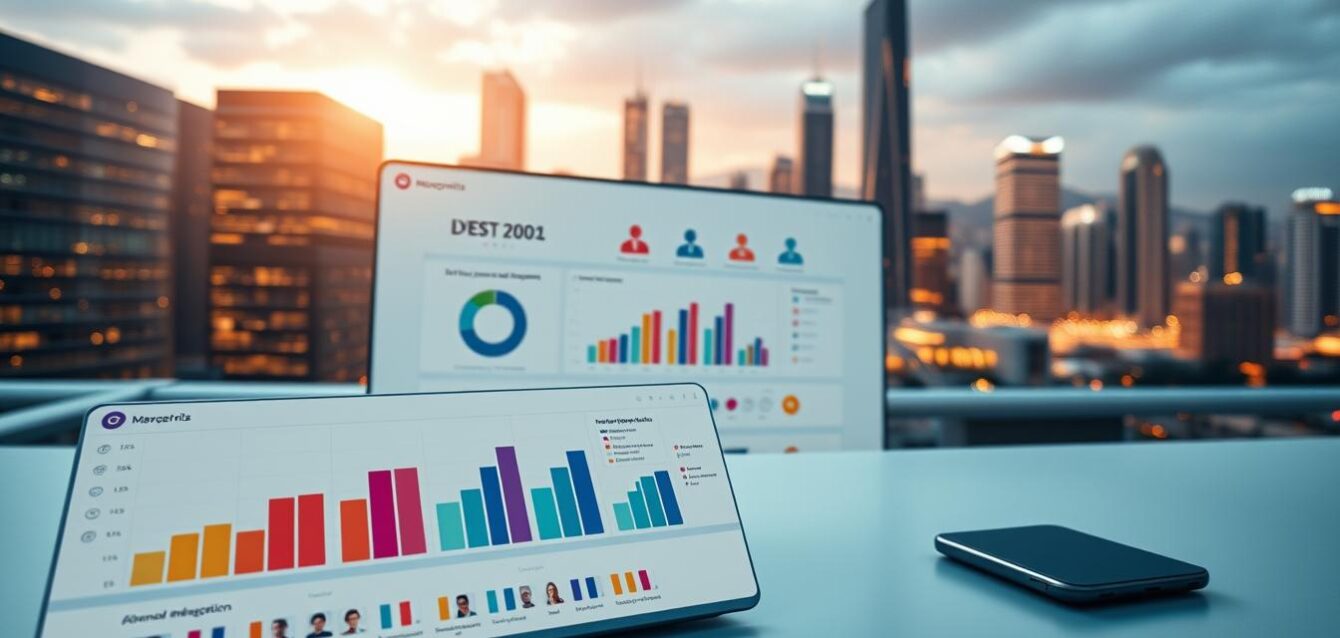Fact: Gmail’s easy unsubscribe button has cut tolerance for irrelevant sends, forcing brands to earn attention in seconds.
We know inboxes are tighter and attention is shorter. So we build systems that send fewer, smarter messages based on browsing behavior, form inputs, and purchase signals.
Omnisend shows segmented campaigns lift open rates by 23% and drive a 27.6% jump in click‑to‑conversion. Small automated streams are often 2% of volume but deliver 37% of email‑driven sales. Huda Beauty doubled Klaviyo revenue by cleaning its email list and focusing on engaged profiles within 120 days.
We position Macro Webber as your growth partner with WebberXSuite™ and the A.C.E.S. Framework. Our promise: a data‑backed, actionable system that turns sends into measurable revenue, protects deliverability, and raises customer lifetime value.
Next: we outline lifecycle, intent, and purchase signals and show exactly how to segment, automate, and measure for predictable pipeline impact.
Key Takeaways
- Precision is non‑negotiable: relevance wins in tight inboxes.
- Segmented campaigns produce higher opens and conversions.
- Small automation streams can drive outsized revenue.
- Clean data and engagement windows protect deliverability.
- We offer systems and frameworks to scale results predictably.
The inbox has changed: why relevance is your only moat now
Big tech now judges senders in seconds — irrelevance costs deliverability and revenue. Gmail’s easy unsubscribe makes it effortless for recipients to leave lists that don’t fit. That frictionless exit accelerates reputation decay for brands that keep blasting broad lists.
Send a flip‑flop promo to someone browsing formal dresses and you lose trust. The result: higher complaints, more unsubscribes, and faster placement into promotions or spam.
Our counter‑move is deliberate:
- Prioritize intent: use browsing, form inputs, and purchase signals to narrow audiences.
- Prune aggressively: 90–120 day engagement windows protect domain health and inbox placement.
- Governance: no full‑list blasts except marquee events; use engagement tiers for routine sends.
We measure what executives care about: complaint rate, engaged reach, inbox placement, and revenue per recipient. Data discipline turns the mantra “send less, sell more” into predictable growth and a durable competitive moat.
What top performers know: segmentation lifts opens, clicks, and revenue
The brands that win send far fewer messages and capture far more value. That shift is measurable: segmented campaigns produce clear uplifts in engagement and unit economics.
Omnisend’s 2025 snapshot shows segmented sends drive a 23% higher open rate. In 2024, click‑to‑conversion rose 27.6%, proving intent‑aligned journeys turn attention into orders.
- Tiny flows, big impact: automated messages are ~2% of volume but generate ~37% of email‑driven sales.
- High‑value flows: welcome, browse/category reminders, cart recovery, and post‑purchase sequences pull the most revenue.
- Executive outcomes: higher revenue per recipient and lower cost per order—better ROI and cleaner unit economics.
- Operational wins: fewer one‑offs, more evergreen campaigns that self‑optimize on behavior and purchase data.
- Example metrics to track: open deltas by segment, click‑to‑conversion by flow, and automation revenue share.
We recommend benchmarking current programs to these ratios. Improving deliverability and focused audience work together to expand engaged reach and make growth predictable.
Email Marketing Segmentation fundamentals for high-ticket brands
High-ticket brands must treat every contact as an opportunity to protect margin and prestige.

We define four core types that drive premium performance.
Demographic, behavioral, psychographic, geographic
Demographic segmentation aligns offers by age and gender to sharpen creative and funnel fit.
Behavioral segmentation groups customers by actions—opens, clicks, browse paths, and cart events—to trigger timely flows.
Psychographic groups match values (eco, artisanal, luxury) and lift affinity without relying on discounts.
Geographic segments enable local relevance: events, climate, shipping rules, and store inventory.
List health, engagement tiers, and governance
We enforce 90–120 day engaged windows. The 70/20/10 send model prioritizes most engaged segments and protects sender reputation.
“Clean data and strict governance turned our sends into revenue, not noise.”
| Focus | Action | Outcome |
|---|---|---|
| Demographic | Tailored creative | Higher top‑of‑funnel CTR |
| Behavioral | Trigger flows | Faster conversion |
| Engagement tiers | Prune/unengaged rules | Protected deliverability |
Executive takeaway: approve a clear segmentation strategy with definitions, QA gates, and rollout milestones. Segment to respect the customer, the inbox, and the brand.
Collect the right data: zero-, first-party, and systems setup
Premium brands win when they collect privacy-first data that feeds real-time personalization. We design capture systems that favor high-signal inputs and clear consent so every profile is useful and compliant.
Forms, quizzes, reviews, and onsite behavior as segmentation fuel
Deploy preference-rich forms and fit quizzes to gather style, use case, and budget thresholds. A short quiz like Andie Swim’s fit-finder creates declared preferences that power targeted journeys.
Instrument onsite behavior: track category depth, product views, search terms, and session recency. These observed signals let us trigger timely flows without guesswork.
Operationalize review flows. Compass Coffee used photo incentives and conditional splits to increase submissions 3.7x QoQ and lift total reviews 70.5%. Visual reviews become persuasive, segment-specific content for customers with matching interests.
Unifying sources into a robust customer database for scalable campaigns
Centralize identities and events in one source of truth. No Excel franken-lists. No stale signals. We sync CDP, ESP, and storefront bi-directionally so triggers run in real time.
- Define tiers: zero-party (declared) and first-party (observed) data power durable segments.
- Select tools: choose segmentation tools that support two-way sync and real-time activation.
- QA & governance: required fields, validation, and consent capture protect deliverability and trust.
Map attributes to activation: specify which traits drive welcome, browse, cart, post-purchase, and loyalty streams. The outcome is richer profiles, cleaner orchestration, and higher yield per send. For example, Andie Swim’s quiz segments added $70K+ in eight months.
Design your segmentation strategy around lifecycle and intent
We map customers from awareness to advocacy with clear triggers and measurable gates.
Start by defining five lifecycle stages: awareness, consideration, purchase, retention, and advocacy. For each stage we name the segment, the primary intent signal, and the desired outcome.
Align content and timing to intent signals—browse depth, cart activity, recency—and let those signals drive which campaigns fire. New subscribers receive brand story and social proof. Buyers move into post‑purchase education and replenishment timing.
- Build lifecycle tracks: map progression goals and exit rules per stage.
- Measure stage success: educative engagement, conversion rate, repeat rate, and reviews.
- Cadence rules: prioritize value-add content and throttle for colder cohorts.
- Automate transitions: first purchase flips a profile into post-purchase flows.
- Re‑engage before suppressing: apply short reactivation streams and clear suppression thresholds.
We insist on declared interests plus observed behavior to personalize beyond token swaps. Integrate paid and onsite channels so messages feel cohesive across the customer journey.
Outcome: a disciplined system that advances your audience with precision, raises engagement, and protects sender health while increasing revenue per customer.
Build your core segments: from engagement tiers to purchase history
Focus your resources on the profiles that generate the most predictable revenue. We design a lightweight system any brand can run. It centers on recency, purchase history, and cart value thresholds.

Engaged profiles vs. broader audience: a practical 70/20/10 send model
Define engaged as activity in the last 90–120 days. This window maximizes inbox placement and response.
- 70% of sends to engaged profiles—highest RPM and conversion.
- 20% to a broader audience for prospecting and category reach.
- 10% to the full list only for marquee events and brand moments.
Past purchases, AOV bands, and cart thresholds
Use purchase history to create segments by category affinity, average order value (AOV) bands, frequency, and gifting behavior. Past purchases should drive cross-sell and replenishment timing.
Add cart value thresholds to control discounting. Reserve deeper offers for higher cart values to protect margin.
| Focus | Logic | Outcome |
|---|---|---|
| Engagement window | 90–120 days | Better inbox placement |
| Purchase history | Category, AOV, freq. | Targeted cross-sell |
| Cart thresholds | $ bands for offers | Protected margin |
| List hygiene | Weekly dedupe & bounce cleanup | Preserved sender reputation |
Operational rules: suppress chronic non-openers, tag acquisition source, and run weekly data hygiene tasks. Track RPM, conversion by AOV tier, and cart recovery by threshold as core KPIs.
Outcome: a robust, scalable framework that raises revenue per recipient, simplifies ops, and keeps domain health intact.
Map essential automated flows that print revenue
A small set of well-tuned automations will reliably produce the majority of campaign revenue. We prioritize flows that match intent, protect margin, and scale without constant hands-on work.
Welcome series that educates, earns trust, and drives first purchase
Send within minutes. Lead with brand story, social proof, and one clear path to a first purchase.
Include reviews and a simple CTA. Keep creative focused on benefits, not discounts.
Browse abandonment by category or bestseller clusters
Trigger by category depth. For known categories (Taylor Stitch example) show top four cluster picks.
For shallow browsing, surface general bestsellers to convert intent into a purchase.
Abandoned cart by cart value with smart use of discount code
Vary incentives by cart value. Reserve a discount code for high-value, high-margin carts.
Use Pulp & Press as an example: thresholded 30% off for carts >$100 during peak promos.
Post-purchase education, replenishment, and cross-sell
Sequence: product care → refill timing → complementary offers. Graza-style refill nudges improve LTV.
Capture reviews and route responders into loyalty flows or referral campaigns.
| Flow | Timing | Primary rule |
|---|---|---|
| Welcome | Immediate, then 2–4 days | Story + reviews, low discounting |
| Browse | Minutes to 24 hours | Category bestsellers or clustered products |
| Abandoned cart | 1 hour, 24 hours, 72 hours | Incentive by cart value; discount code sparingly |
| Post-purchase | Day 1, week 2, refill window | Education → cross-sell → review capture |
QA and governance: verify dynamic product renders, links, and personalization tokens. Rotate creative quarterly and track flow revenue share. Aim for double-digit contribution from automations and measure by purchase lift, flow RPM, and churn risk.
Monetize loyalty: CLV, VIPs, and high spenders
Loyalty that drives premium growth is a system, not a one-off reward. We build tiered programs that deliver clear privileges, timed scarcity, and measurable ROI.
Define VIP thresholds by CLV and recent purchases, not just order count. That lets us reward true lifetime value and create predictable uplift in sales.
VIP early access, exclusive drops, and limited windows
Grant early access to curated drops and capsule launches. Communicate status plainly so customers feel earned privilege.
Segmented incentives for low, medium, and high spenders
Calibrate incentives: value-driven offers for smaller buyers; scarcity and service for top spenders. Use purchase history to tailor creative—category loyalists get related drops, explorers see discovery bundles.
- Privileges: private previews, concierge support, and invite-only events.
- Margins: protect value with short access windows and inventory holds for VIP cohorts.
- Growth levers: layer referrals and UGC asks where advocacy is strongest.
“Chamberlain Coffee’s ‘order today for a chance at a full refund’ drove re-engagement by creating excitement without permanent discounting.”
Outcome: higher repeat rates, larger baskets, and stronger brand equity. We operationalize this through clear tiers, timed early access, and targeted email to the right customers at the right moment.
Behavioral segmentation that feels personal, not pushy
When customers browse, click, or linger, they reveal intent we can honor. We translate those signals into respectful personalization that adds value and protects trust.
Clicks, product/category engagement, and content affinity signals
Use clear signals: opens and clicks, category depth, wish lists, product dwell time, and device context. These inputs let us decide which content blocks and offers to show.
- Prioritize engagement depth: click paths and scroll behavior determine offers.
- Target by category affinity and recently viewed products to keep messages relevant.
- Blend declared interests with observed behavior to refine recommendations.
- Map device context to creative; optimize where customers convert.
- Trigger gentle reminders for considered products; cap frequency to avoid fatigue.
Keep copy brand-safe: infer actions—don’t overstate them. Avoid phrases that sound like surveillance. Taylor Stitch’s category browse flow is a clear example of high relevance without overreach.
Outcome: respectful personalization that earns attention, lifts conversion, and scales across campaigns with predictable ROI.
Geographic and seasonal relevance at scale
Regional context turns a generic send into a timely, useful interaction. We design systems that match offers to calendar, climate, and store realities so customers get messages that matter now.
Location-based campaigns tailor messaging by country, state, zip, or radius. For multi-market brands this prevents winter products from landing in summer markets and avoids pricing or availability mismatches.
Operationally: we sync inventory, local hours, and currency to each audience profile. Weather-aware triggers and local events add urgency without extra creative burden.
Location-based offers, local events, and weather-aware campaigns
- Build geo segments by country, region, zip, or proximity to stores and events.
- Sync seasonal products to climate realities and inventory availability.
- Localize messaging, policies, and store hours; surface nearby pickup options.
- Use weather triggers and event windows to increase relevance and conversion.
Example: Voisins’ Bank Holiday email answered “are you open?” and stacked timely offers. The result: immediate foot traffic lift and higher conversion in the targeted region.
Outcome: higher engagement and conversion when campaigns reflect customers’ world, measured by regional lift and refined cadence.
Psychographic and interest-based segmentation that builds brand love
Psychographics connect products to purpose. We map interests and values so messages feel personal and earned.
Capture declared preferences with short quizzes and preference forms. Observe content engagement to validate declared interests. Use both signals to build segments based on values—sustainability, performance, luxury craft.
Activate by aligning content pillars to each cohort. Serve product stories, care guides, and user‑generated proof that match a group’s worldview. Rotate storytelling to maintain cultural relevance and avoid stereotype-driven creative.
“Andie Swim’s fit‑finder segments powered $70K+ incremental revenue in eight months.”
| Capture | Activation | Outcome |
|---|---|---|
| Quizzes & preferences | Personalized content blocks | Higher long‑form engagement |
| Content behavior | UGC and social proof swaps | Stronger affinity and saves |
| Purchase signals | Values‑aligned product pitches | Deeper loyalty, fewer discounts |
| Survey tags | Community storytelling | Increased shares and referrals |
Measure brand lift with proxies: saves, shares, session depth, and flow revenue by cohort. The outcome is durable loyalty built on meaning, not markdowns.
Deliverability and list hygiene: protect your sender reputation
Deliverability is the foundation—ignore it and all growth collapses. For premium brands, protecting inbox placement is non‑negotiable. We treat the sender reputation as a strategic asset and govern it with strict rules.
Cleaning inactive subscribers and re-engagement flows that work
Define inactivity: no opens or clicks in 90–120 days. Launch a gentle re‑engagement track: soft reminders, value content, then a selective incentive.
- Tier by engagement to control frequency and risk.
- Suppress hard bounces, spam complainers, and chronically unresponsive contacts weekly.
- Win‑back tests: content first, product news next, incentives last.
- Validate acquisition sources and block low‑quality signups and bots.
Use data to re‑qualify returning readers before restoring full cadence. Document a hygiene SOP and enforce it every week.
“Huda Beauty gated to engaged profiles within 120 days and doubled Klaviyo‑attributed revenue year over year.”
Outcome: safer scaling, higher engaged reach, and stronger inbox placement for your email list and customers.
Testing, personalization, and dynamic content
Small experiments, run with rigor, compound into major uplift over time. We codify tests so each campaign becomes a data point that informs creative, timing, and offer strategy.
Subject lines, send timing, and segment-specific content blocks
Welcome sends often show the highest engagement. Time the first message within minutes and follow with a short sequence. Test subject lines, timing, and creative aligned to intent.
Practical rules we enforce:
- Create a test calendar covering subject lines, send windows, offers, and creative per cohort.
- Use dynamic content blocks to reflect category affinity, lifecycle, and acquisition source.
- Personalize beyond first name: preferences, past interactions, and stage needs.
- Align incentives to margin rules and customer value rather than blanket discounts.
| Test Area | Metric | Expected Outcome |
|---|---|---|
| Subject line variants | Open rate delta | Higher immediate engagement |
| Send timing by cohort | Click rate | Optimized send windows |
| Dynamic blocks | Conversion by block | Higher relevance, better RPM |
| Acquisition-specific welcome | First‑purchase rate | Improved early conversion (e.g., Marine Layer) |
Outcome: an executive‑ready learning engine that scales relevance, raises conversion, and compounds performance over time.
Predictive and AI-powered segmentation for the present
Predictive scores turn raw profiles into prioritized action lists that executives can fund today. We use predicted CLV, churn risk, and next-order dates to rank audiences by value and urgency.
Use predicted CLV to weight VIP cultivation and budget allocation. Trigger churn‑save flows for high‑risk profiles with calibrated offers or value refreshers.
Time replenishment and cross‑sell with next‑order predictions so messages arrive when purchase intent peaks. Apply spending potential to curate assortments and merchandising depth.
Segments AI and faster ops
Segments AI builds segments from natural language prompts, accelerating campaign setup while preserving governance and human review.
- Pipe predictions into ads for cross‑channel reinforcement.
- Trigger flows on predictive thresholds to allocate attention efficiently.
- Prioritize limited inventory access for highest‑value cohorts — a clear, approvable example for executives.
| Signal | Action | Outcome |
|---|---|---|
| Predicted CLV | VIP budget & early access | Higher LTV, protected margin |
| Churn risk | Churn‑save flow | Reduced attrition |
| Next order date | Replenishment timing | Improved repeat rate |
| Spending potential | Assortment depth | Higher AOV |
Model governance matters: monitor drift, lift, and ROI. We require human review and rollback gates so predictive automation speeds ops without risking deliverability or brand trust.
Measurement that matters: tying segments to revenue and LTV growth
Tie every segment to dollars and the board will fund growth with confidence. We build a measurement framework that links audience cohorts to clear business outcomes and budget decisions.
Start with four trusted KPIs: revenue per thousand sends (RPM), conversion rate, repeat purchase rate, and lifetime value (LTV). Track these at the segment and flow level so campaigns and automations show direct ROI.
- Dashboards: expose revenue per segment and per 1,000 sends for fast comparisons.
- Modeling: project LTV lift from lifecycle and CLV‑led strategies to justify spend.
- Benchmarking: compare automation share to the ~37% target and find headroom.
Attribute contribution by campaigns and flows, and segment by acquisition source to refine welcome treatments. Use clear experiment rules—stop/go thresholds and minimum sample sizes—so capital moves quickly and safely.
Example: adjusting frequency by engagement tier raised RPM while protecting sender reputation.
| Metric | Action | Outcome |
|---|---|---|
| RPM by segment | Prioritize high‑value cohorts | Higher revenue per send |
| Automation share | Optimize flows | Reach ~37% revenue from small volume |
| Cohort LTV | Invest in CLV strategies | Justified budget lifts |
Outcome: trusted numbers that guide strategy, allocate budgets, and prove the commercial value of segmentation and campaigns to executives.
Conclusion
We can move fast and win. strong. In weeks you can shift from noise to relevance and start compounding the gains other brands only promise.
Proof: targeted work drives +23% open rates, +27.6% click‑to‑conversion, and tiny automations (2% of volume) that produce ~37% of revenue. Huda Beauty, Taylor Stitch, Graza, and Andie Swim show this playbook scales.
The takeaway: stop sending more and start sending smarter. Clean lists, engagement tiers, behavior‑led flows, geo/seasonal relevance, and predictive prioritization create higher RPM and rising LTV.
Priority slots for Q4/Q1 are limited. Book Macro Webber’s Growth Blueprint or request priority access to our Segmentation Sprint to rebuild core flows and governance in 30 days. Act now to capture customer intent before competitors do.



